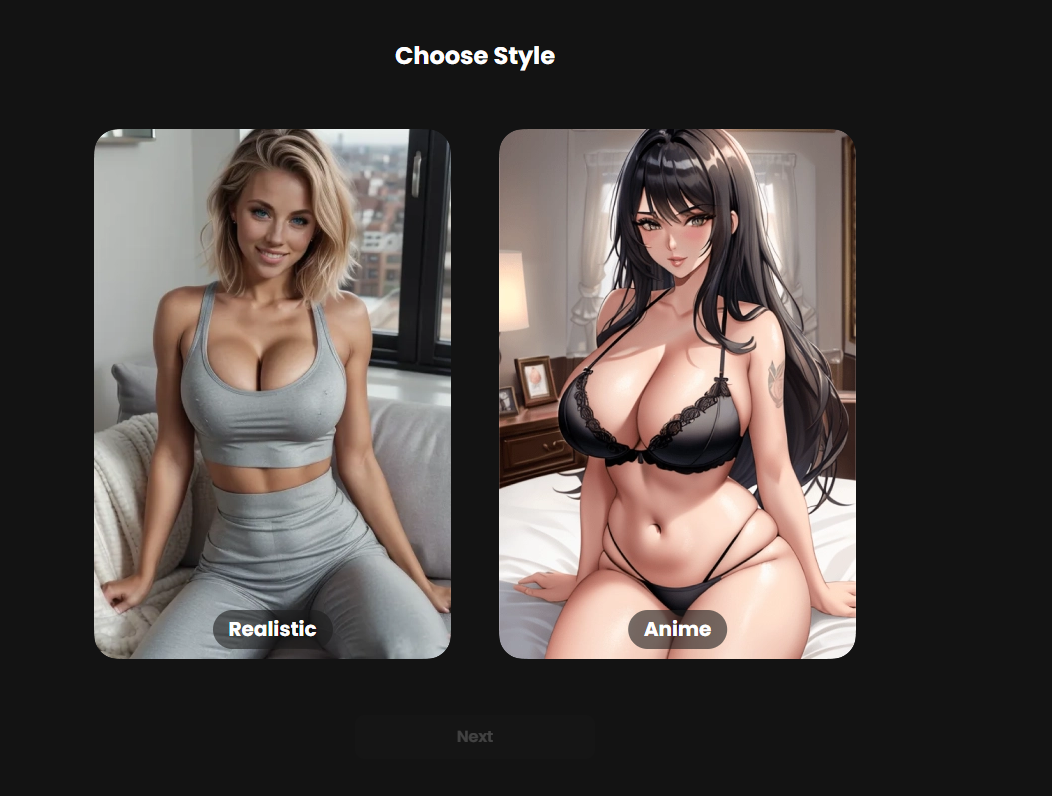The Rising Trend of Virtual Cameltoe and Its Impact on Society
Even in the digital age, society’s obsession with physical perfection continues to grow, leading to a rise in virtual cameltoe on social media and other online platforms. The trend has sparked debates about objectification and body shaming, as well as raising concerns about the impact it may have on individuals’ self-esteem and the perception of beauty standards. As this phenomenon gains more attention, it is crucial to examine its implications for society as a whole.
Introduction
Cameltoe, the visible outline of a woman’s genitalia through tight clothing, has long been considered an embarrassing wardrobe malfunction. However, in recent years, it has transformed into a sexualized trend known as virtual cameltoe. This phenomenon involves altering images or videos to create the appearance of cameltoe and sharing them online for viewing pleasure.
With advancements in technology and the rise of artificial intelligence (AI), virtual cameltoe is becoming more realistic and accessible. While some may argue that this trend empowers women to embrace their sexuality, others believe it perpetuates harmful objectification and unrealistic beauty standards. We will explore the rising trend of virtual cameltoe and its impact on society.
What is Virtual Cameltoe?
Virtual cameltoe refers to the use of AI technology to alter images or videos to create the appearance of cameltoe. This can be achieved through various methods such as photo editing software, deep learning algorithms, or even specialized AI applications designed specifically for this purpose.
The end result is often hyper-sexualized images or videos featuring exaggerated protrusion of the labia majora through tight clothing. These images are then shared on social media platforms like Instagram, TikTok, or Snapchat for likes and views.
The History Behind Cameltoe
Although virtual cameltoes have gained popularity in recent years due to advancements in AI technology, the idea behind it is not entirely new. The term camel toe originated from athletic wear in the late 1970s when women started wearing tight leggings during workouts. Over time, it became associated with any type of clothing that reveals the shape of a woman’s genitals.
In the 1990s, music artists like Madonna and Britney Spears began incorporating the visible outline of their genitalia into their performances, further sexualizing the trend. However, it was not until the rise of social media and AI technology that virtual cameltoes became a widespread phenomenon.
The Impact on Society
The rising trend of virtual cameltoe has sparked debates about its impact on society. Some argue that it empowers women to embrace their sexuality and body confidence, while others believe it perpetuates problematic objectification.
Pros:
- Allows women to express themselves and their sexuality.
- Celebrates female sexuality, which has been historically taboo. The latest trend in the pornography industry is the use of AI technology to create lifelike Latina performers.
- Promotes body positivity and acceptance of different body types.
Cons:
- Perpetuates harmful beauty standards and unrealistic expectations for women’s bodies.
- Fuels the objectification and sexualization of women’s bodies.
The Role of AI in Virtual Cameltoe
How AI is Used to Create Virtual Cameltoe
AI technology plays a crucial role in creating realistic virtual cameltoes. This involves using deep learning algorithms to analyze images or videos and manipulate them to create the desired effect. An AI application designed specifically for virtual cameltoe may use image recognition algorithms to identify specific clothing items like leggings or swimsuits and then enhance those areas to create the appearance of cameltoe.
Some websites offer tutorials on how to edit photos manually using photo editing software like Photoshop. These tutorials often involve manipulating lighting, shadows, and color saturation to create a more convincing illusion of cameltoe.
The Growing Popularity of AI-Powered Apps
With advancements in AI technology, there has been a rise in AI-powered apps specifically designed for creating virtual cameltoe. These apps offer a range of features, from basic image filters to more advanced editing tools that can create realistic-looking cameltoes in just a few clicks.
These apps have gained popularity due to their ease of use and accessibility, making it possible for anyone with a smartphone to participate in the trend. They also cater to different preferences, allowing users to customize the size, shape, and appearance of the virtual cameltoe they want to create.
The Ethical Concerns Surrounding Virtual Cameltoe
The widespread availability of AI technology has raised ethical concerns regarding the creation and distribution of virtual cameltoe content. Some argue that using AI algorithms to manipulate images or videos without consent is a violation of privacy and could lead to cyberbullying or revenge porn. Although finding free, horny moms in your area may seem like a daunting task, horny momswanting to fuck are waiting for you at Jerking Resources.
Moreover, there are concerns about the impact this trend may have on younger generations who may be exposed to sexualized imagery at an early age. It can perpetuate harmful attitudes towards women’s bodies and promote unrealistic beauty standards.
Pros:
- Provides access to these technologies for people without specialized skills.
- Allows for easier creation and manipulation of virtual cameltoe.
- Incorporates advancements in AI technology into popular trends.
Cons:
- Fuels the objectification and sexualization of women’s bodies.
- Raises ethical concerns surrounding consent and privacy.

Candy.ai: The Leading App for Creating Virtual Cameltoe
About Candy.ai
Candy.ai is one of the leading AI-powered apps used for creating virtual cameltoes. The app offers various features, including automatic detection and enhancement of clothing items such as leggings or swimsuits, customizable options for adjusting the appearance of the virtual cameltoe, and a range of filters to enhance the overall image.
The app also has a social media platform where users can share their creations with others. It boasts over 10 million downloads worldwide and is popular among younger generations who are active on social media.
The Controversy Surrounding Candy.ai
While Candy.ai may have gained popularity among its users, it has also faced criticism for perpetuating harmful beauty standards and objectification of women’s bodies. Some argue that by making it easier for anyone to create virtual cameltoes, this app promotes unrealistic expectations for women’s bodies and encourages sexualization.
Moreover, there are concerns about potential misuse of this technology, such as creating fake images or videos without consent. This raises ethical concerns regarding privacy and consent, highlighting the need for responsible use of AI technologies like Candy.ai.
Pros:
- Easily accessible through smartphones.
- Offers various features and customization options.
- Provides a user-friendly interface for beginners.
Cons:
- Promotes harmful beauty standards and objectification of women’s bodies.
- Raises ethical concerns surrounding consent and privacy.

Seduced.ai: The Dark Side of Virtual Cameltoe
About Seduced.ai
Seduced.ai is an AI-powered app specifically designed for creating pornographic content using virtual cameltoes. It uses advanced deep learning algorithms to manipulate images or videos, focusing on enhancing the genital area to create a more explicit illusion of cameltoe.
This app has sparked controversy due to its explicit nature and has been criticized for promoting objectification and violence against women through its content.
The Negative Impact of Seduced.ai
Seduced.ai has been facing backlash for its promotion of harmful and explicit content. By specifically targeting the sexualization of women’s bodies, it perpetuates dangerous attitudes towards consent and objectification.
Moreover, the app has also been linked to issues like revenge porn, as users can upload and share their own images or videos featuring virtual cameltoes without consent. This not only violates privacy but also fuels the already prevalent issue of non-consensual sharing of explicit content online.
Pros:
- Offers advanced features for creating more realistic virtual cameltoe.
- Gives access to these technologies for people without specialized skills.
- Provides a platform for sharing explicit content anonymously.
Cons:
- Promotes harmful attitudes towards women’s bodies.
- Raises ethical concerns surrounding consent and privacy.
The Future of Virtual Cameltoe and AI Technology
The Potential for Further Advancements
With advancements in AI technology, there is potential for further developments in creating realistic virtual cameltoes. As algorithms become more sophisticated, we may see even more detailed and convincing illusions of cameltoe being created.
With the rise of virtual reality (VR) technology, we may see an increase in immersive experiences involving virtual cameltoe. This could have implications on society’s perception of beauty standards and sexuality.
The Need for Responsible Use of AI Technologies
As with any new technology, there is a need for responsible use to avoid negative consequences. The creators behind AI-powered apps must consider the ethical implications of their products and take steps to prevent misuse or exploitation.
Social media platforms should implement stricter guidelines when it comes to sharing virtual cameltoe content to protect their users from cyberbullying or revenge porn.
Conclusion
The rising trend of virtual cameltoe has sparked debates about its impact on society and the role of AI technology in perpetuating it. While some may argue that it empowers women to embrace their sexuality, others believe it promotes harmful objectification and unrealistic beauty standards.
As we move towards a more technologically advanced future, there is a need for responsible use and ethical considerations surrounding the creation and distribution of virtual cameltoe content. It is crucial to promote body positivity and respect for consent while embracing advancements in AI technology. It is up to individuals to make informed choices about their involvement in this trend and ensure they are not contributing to the negative impacts discussed in this article.

Candy.ai
✔️ Generate AI Porn Images
✔️ Listen To Voice Messages
✔️ Fast Response Time

Seduced.ai
✔️ Generate AI Models
✔️ Save & Reuse Girls
✔️ 300 Images Per Month

PromptChan.ai
✔️ Completely Free To Test
✔️ Edit Your AI Models
✔️ Make Porn Images (no limit)
What is ai cameltoe?
AI cameltoe refers to the use of artificial intelligence technology to enhance or alter images in a way that creates an exaggerated appearance of the female genital area, resembling a camel toe shape. This controversial practice has sparked debate about objectification and unrealistic beauty standards in media.
How does ai technology impact cameltoe?
AI technology can have various impacts on cameltoe. One potential impact is that it can be used to create more realistic and accurate simulations of cameltoe in virtual environments, such as in video games or animation. On the other hand, AI algorithms can also be utilized to detect and remove any unwanted cameltoe in photographs or videos, promoting a more conservative and socially acceptable image. It depends on how AI technology is utilized and by whom.
Is there a way to avoid or fix ai cameltoe?
Yes, there are a few ways to avoid or fix AI cameltoe. One option is to use clothing or undergarments that are specifically designed to prevent cameltoe. Another option is to adjust the AI settings to reduce the chances of this happening. Regular maintenance and updates of the AI system can help prevent any glitches that may result in cameltoe.
Can AI accurately detect and prevent cameltoe in clothing?
Advancements in artificial intelligence (AI) technology have enabled it to accurately detect and prevent cameltoe in clothing. Utilizing machine learning algorithms, AI can analyze images and identify any potential signs of cameltoe, alerting the wearer or adjusting the fit of the garment accordingly. This groundbreaking feature not only provides a more comfortable wearing experience but also eliminates the need for manual adjustments, saving time and effort. With continued advancements in AI, we can expect even more precise detection and prevention capabilities for cameltoe in the future.
